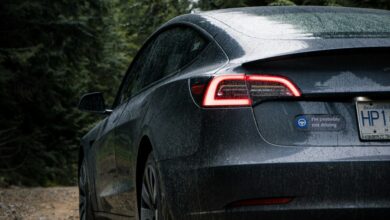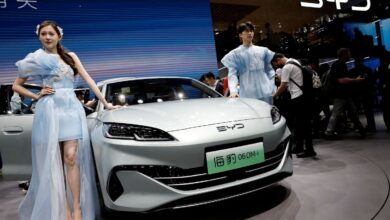These is what I have learned to date

In late November I bought a new electric car. My first. I checked out many options before choosing a BYD Dolphin which seemed to best fit my needs. There are quite a few alternatives now available and will be several more later in the year.
There are also many good second hand models available (eg www.goodcar.co) and other reasonably priced new models (BYD Atto – larger, BYD Seal – super fast, MG 4 & ZS models GWM Ora – all in the $36k- $57k area ) and many many more expensive and up-market models. (For current and second hand options see aeva.au/fact-sheets).
My Dolphin is a 5 seater, 4 door, small sedan with a 60 kWh battery with a nominal range of 490 km with an on-road cost of $47,000.
I spent the first 12 weeks mostly driving around the Bellarine Peninsula (near Geelong in Victoria) with a few longer trips to Kennett River, Brisbane Ranges and Melbourne.
In this time I drove over 3,500 km and predominantly recharged at home through a wall mounted 7 kW charger and occasionally with a free recharge in Drysdale.
I found I could charge during the day when I was at home using entirely my own solar. This I find to be the cheapest way as the cost is one cent per km in foregone feed-in tariff of 8c/kWh on sunny days.
I also used overnight and off-peak power, which costs about 3c/km. There are also some cheap overnight EV power options available from 8c/kWh (1cent/km).
It is pleasant passing petrol stations and not paying my $50+ per week (vs about $5 of electricity). My son-in-law drives an Atto3 over 100 km/day and saves over $150 per week and avoids lots of refuelling time.
I found the range varied between 410 to 490 km depending mostly on the speed. When slowing down / going downhill the regenerative braking system has proved to be significant. The Drysdale to Kennett River runs were very energy efficient but Melbourne less so.
I had no range anxiety.
Recently, I went on a 14 day road trip to north of Sydney and covered 2,520 km. Much of the trip was done at high speed, i.e. 110 km/h, and this reduced the range to 345 km, but was offset by some slower roads to give an overall trip range of 387 km.
There seems to be a significant difference once the speed exceeds 95 km/h. Whilst climbing up mountains (eg going via Thredbo back to Victoria) it was very energy hungry going up to Dead Horse Gap, but it then used almost no power back down towards Toowong with the battery range increasing for a while. So the overall rate was very good.
Recharging in Victoria was fairly straightforward with two major suppliers (Evie and Chargefox) and the Plugshare App showing most locations with their availability, speed and nearby points of interest.
However, there needs to be many more stations in rural locations. Incidentally, EV chargers do help the local communities as EV drivers and passengers stop for meals, coffees, shop etc.
It was my first time driving an EV in NSW and I found it more difficult with multiple recharging suppliers, little apparent overall coordination and few in rural areas. I didn’t run out but had to load up several Apps and frequently phone their help lines.
I compare this to the toll roads (which there are many around Sydney) where my Victorian “recorder” automatically picked up and transferred the charges. There is a definite opportunity for a new overall System/App/ credit card. There were lots of chargers around Sydney and up the Hume and on other major highways.
The cost of recharging varied (roughly the faster the speed the more expensive it was) and I spent $170 on electricity (vs $330 in my previous efficient petrol car). I also did some partial overnight charging at friends and family directly from a standard socket which topped up the battery.
Overall it is easy operating in one’s local area and doing say 200 km a day and recharging overnight (or preferably during the day on your own solar).
One saves a substantial amount of money and also time as you don’t have to visit petrol stations. Instead you plug in when you arrive home – which is a very quick task.
The concept is closer to charging up one’s mobile phone rather than having to make a special visit to a garage. For long distance trips you do need to plan but generally I found it reasonable, as a stop for 20 to 50 minutes every 2 to 4 hours fitted well with coffee, meal , exercise and toilet breaks.
I found it annoying that many chargers were uncovered (both for rain and sun) and some had new concrete or white stone pads which reflected the light and heat which made reading a small mobile phone screen troublesome whilst “slowly melting” and is just poor ergonomic design.
I expect that more recharging stations will open shortly and hopefully they will be more coordinated and easier to operate (similar to the way toll roads have developed) and be more user friendly.



